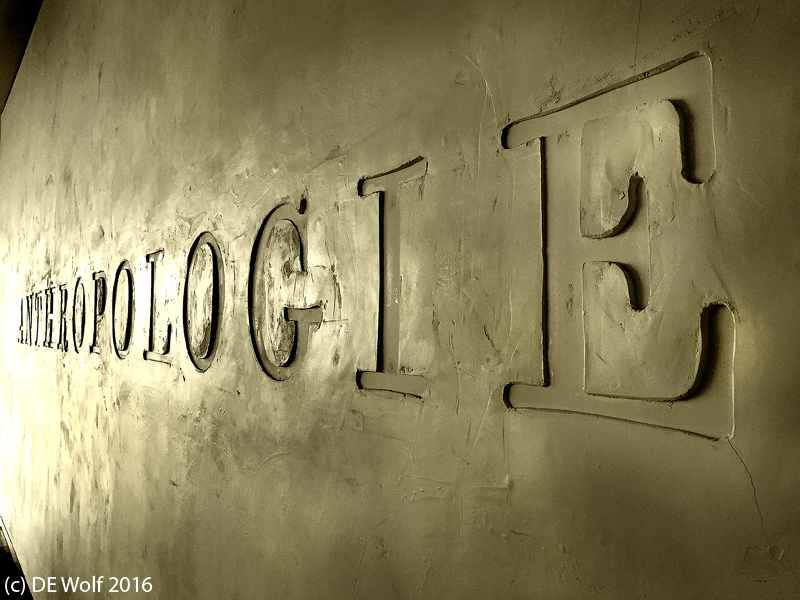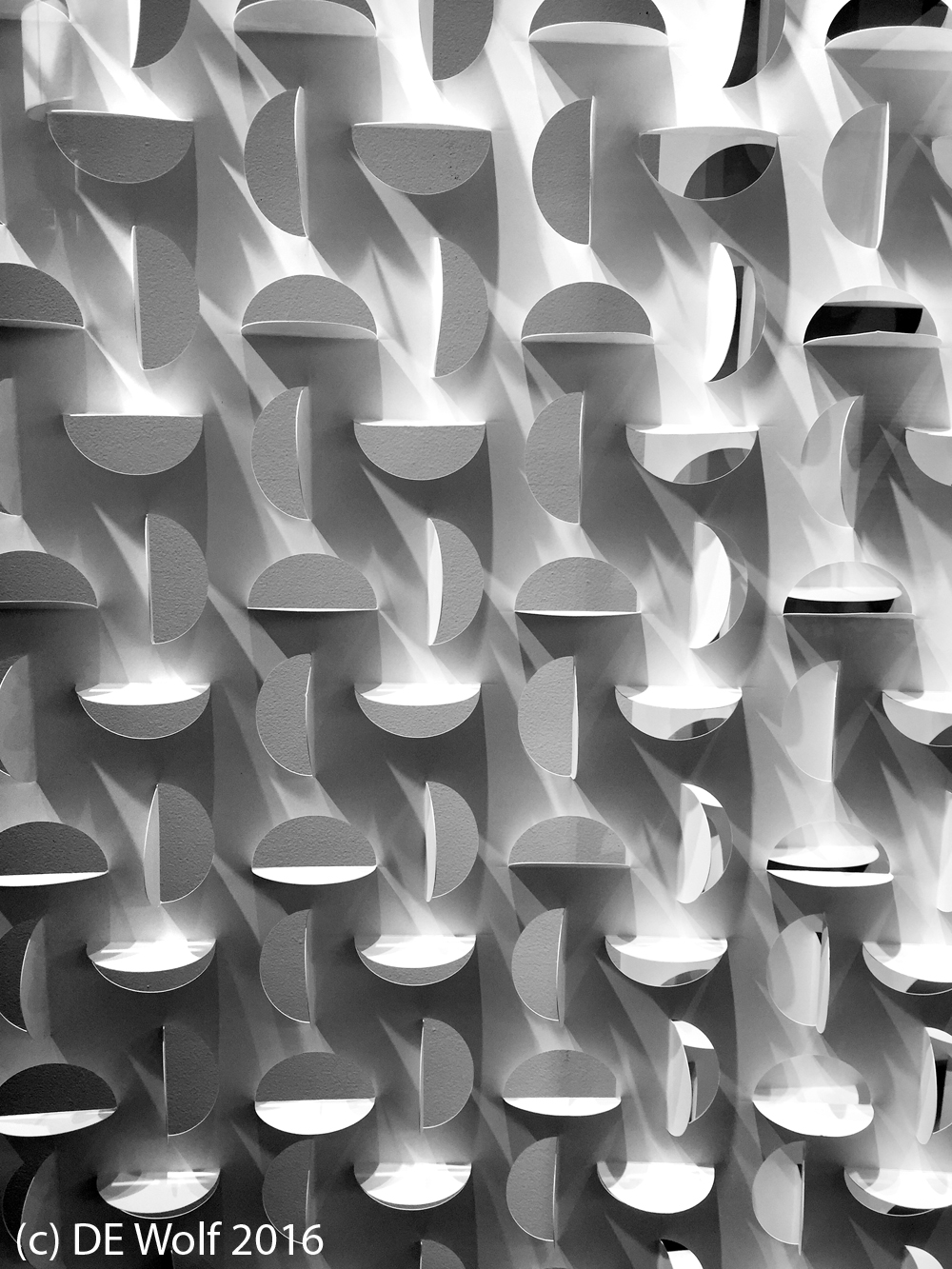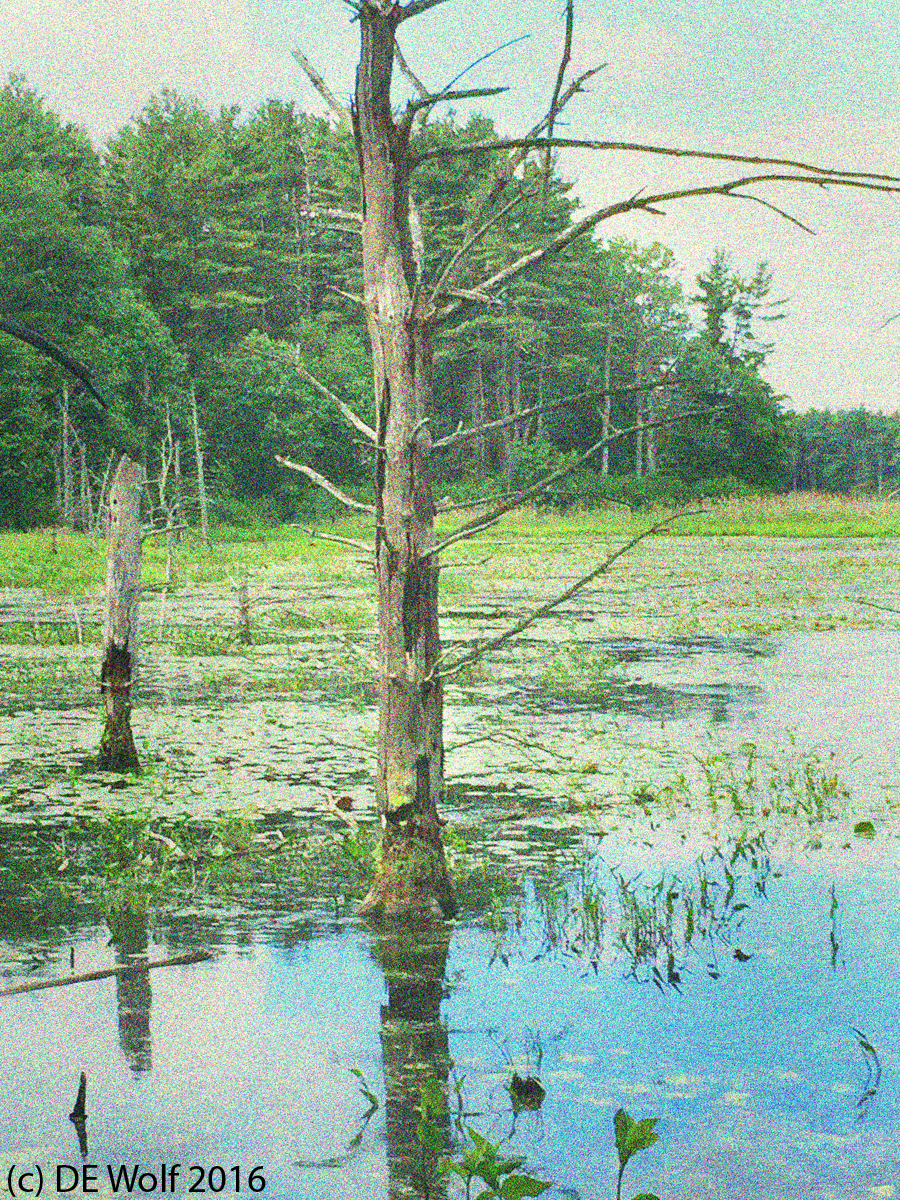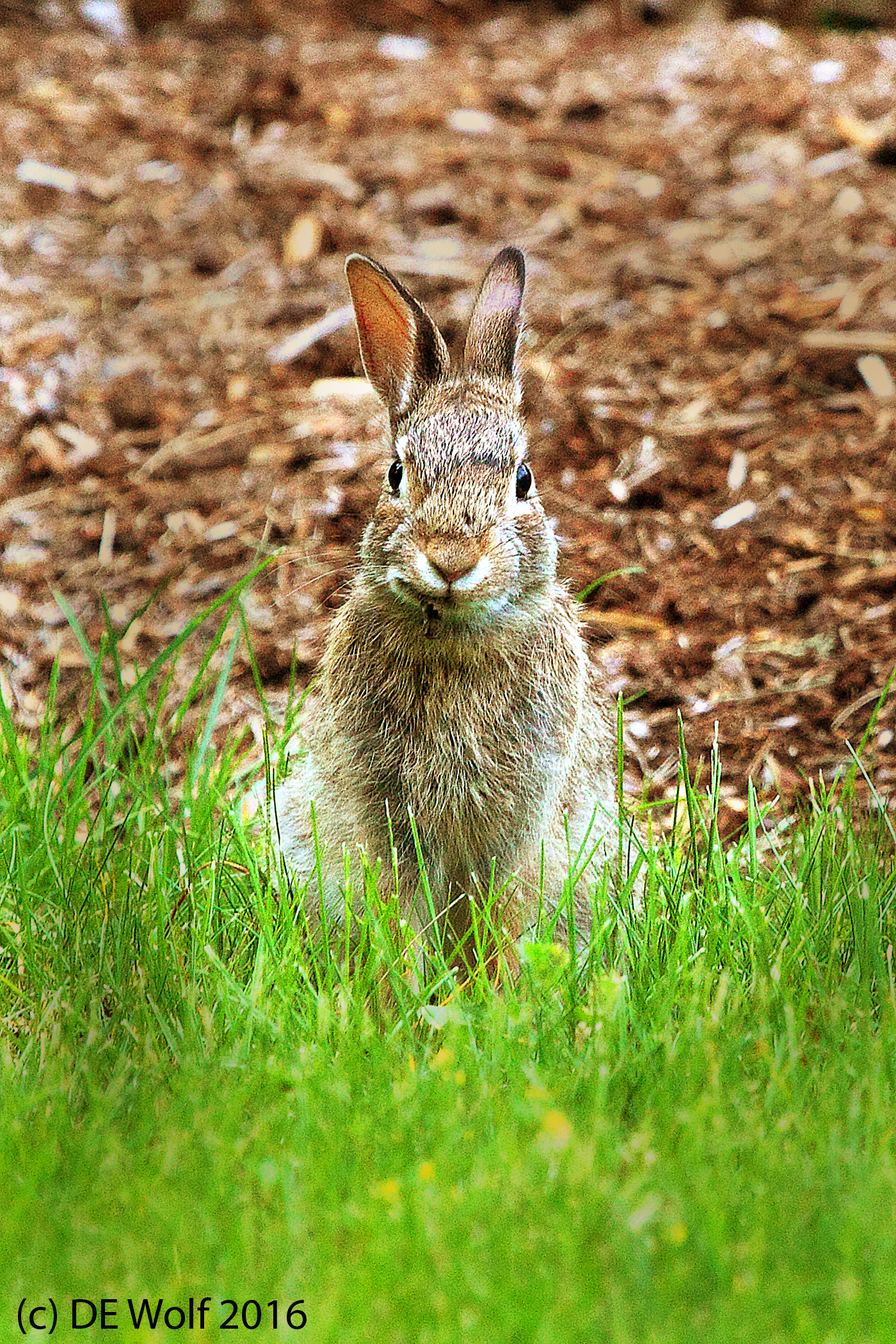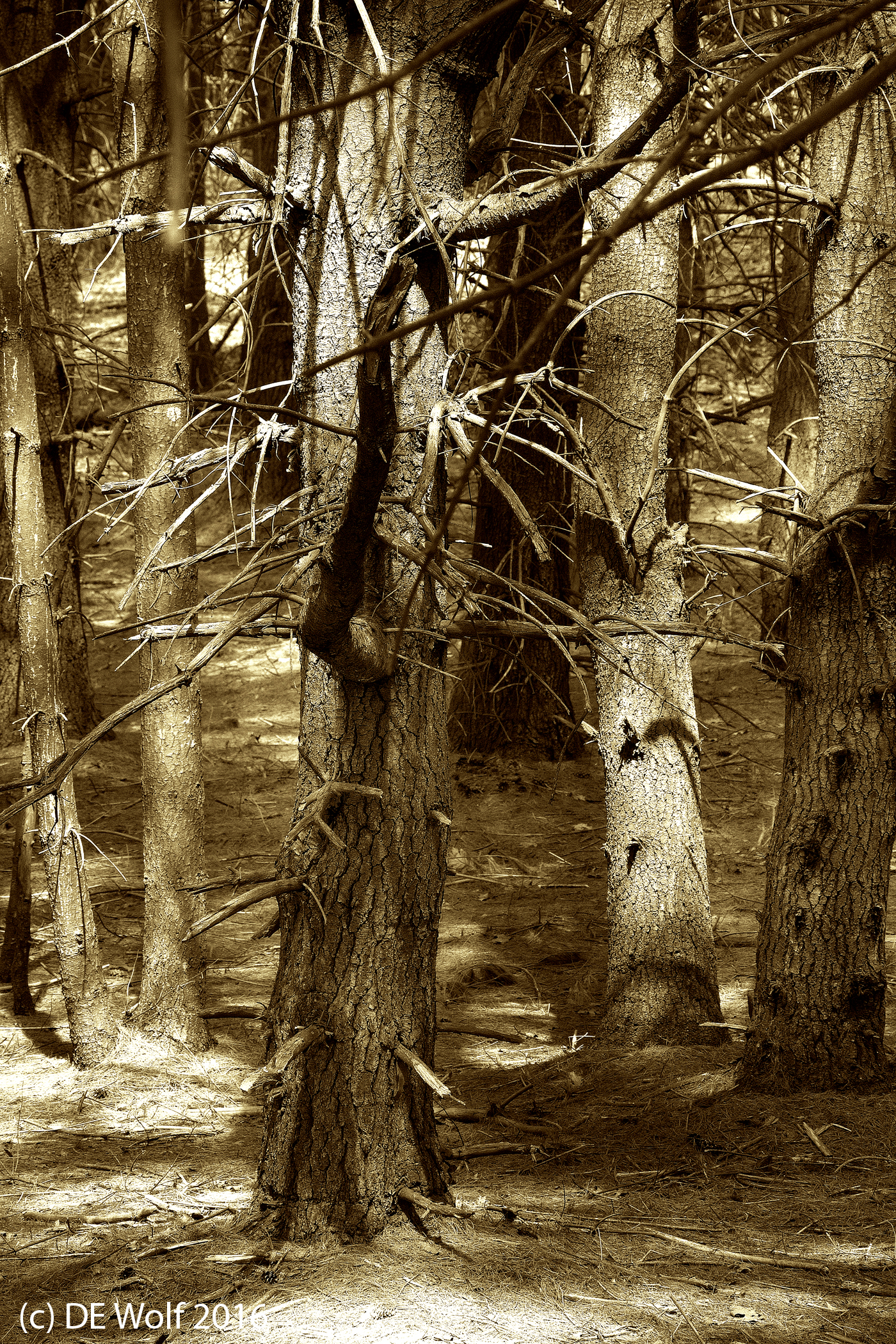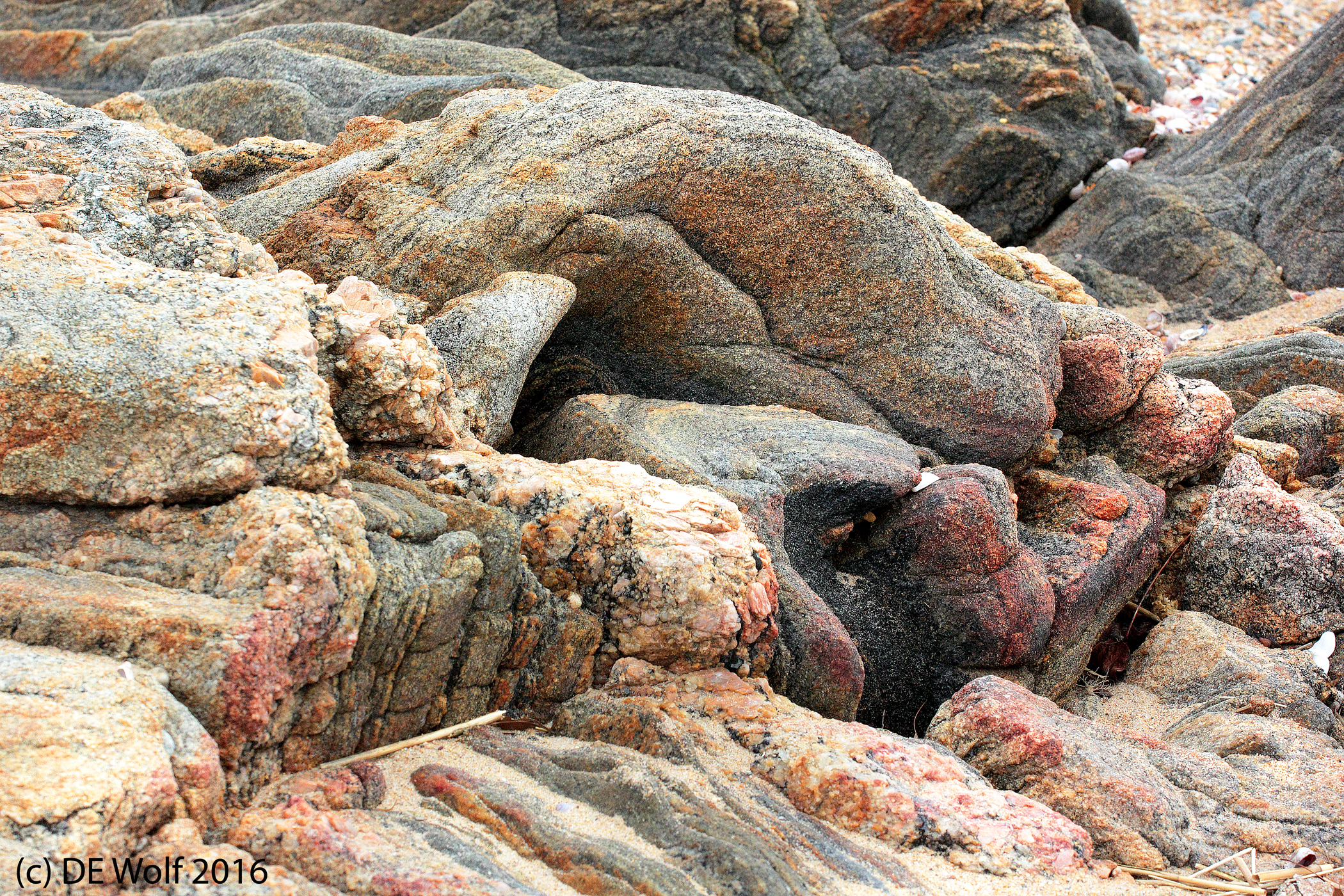I always love to test the limits of the IPhone. To see what it takes to get an interesting image. And this is particularly challenging in the mall, when there is in general little to photographs. But geometrics always come to the rescue, and the other day I found this ill-illuminated wall by the Anthropologie store with huge letters in high relief. I thought I would test the depth of field of the IPhone 6 camera and was pretty pleased with the results. It is like a lesson in perspective.
Category Archives: Personal Photographic Wanderings
Cut-outs
Figure 1 is an abstract that I took of a cut-out paper background in a store window with my IPhone. The appeal of Iphones, both to the artist and the viewer is an intriguing and multifaceted one. They appeal to the human mind which is intrinsically reductionist – assessing a scene from a limited set of points and what are called spatial frequencies. Beyond that there is the appeal of purity: the appeal to a vivid and pure color, the appeal of a pure tone. I suppose in a sense that the appeal of black and white images lies in the shedding of color, the reduction of the image to form, and the replacement of color with a depth and richness of tonal dynamic range. In some cases there is the suggestiveness of the form, an allusion to something purely human such as spirituality or sexuality. In the image of Figure 1 the triangular glare that emits from some of the horizontal surfaces reminds me of votive candles, suggesting the sacred to me. And yes I use both those terms in the same sentence. And of course, as in the present image we surrender ourselves to the purity of geometry. Indeed, where as in the current image that geometry becomes broken, we are not dismayed. Rather it enhances the appeal, as if the the deviation reminds us of the complexity of the real world. It is as Euclid (365-275 BCE) said:
“The laws of nature are but the mathematical thoughts of God.”
Photopictorialism Study #14
My apologies for having disappeared for a few days. It has been a very busy week. So to relax I went for a walk this morning at the Assabet River National Wildlife Refuge. The geese are in a hissy mood as you pass them The orchids are drying up now. The ferns are abundant, and I came across a large number of insect egg pods. On a mini-scale it is Invasion of the “Body Snatchers,” “Aliens,” or worse. At one point in front of one of the bunkers I came upon a literal swarm of colorful dragonflies.
The marsh is, as always, stunning and this morning I used my IPhone the capture the dead tries on the marsh against a cloudy bu azure sky. I decided that this was best done in a photopictorialist style (Figure 1) – filled with noise to mimic a painting and the bromoils of a bygone age a century ago.
Back in the woods
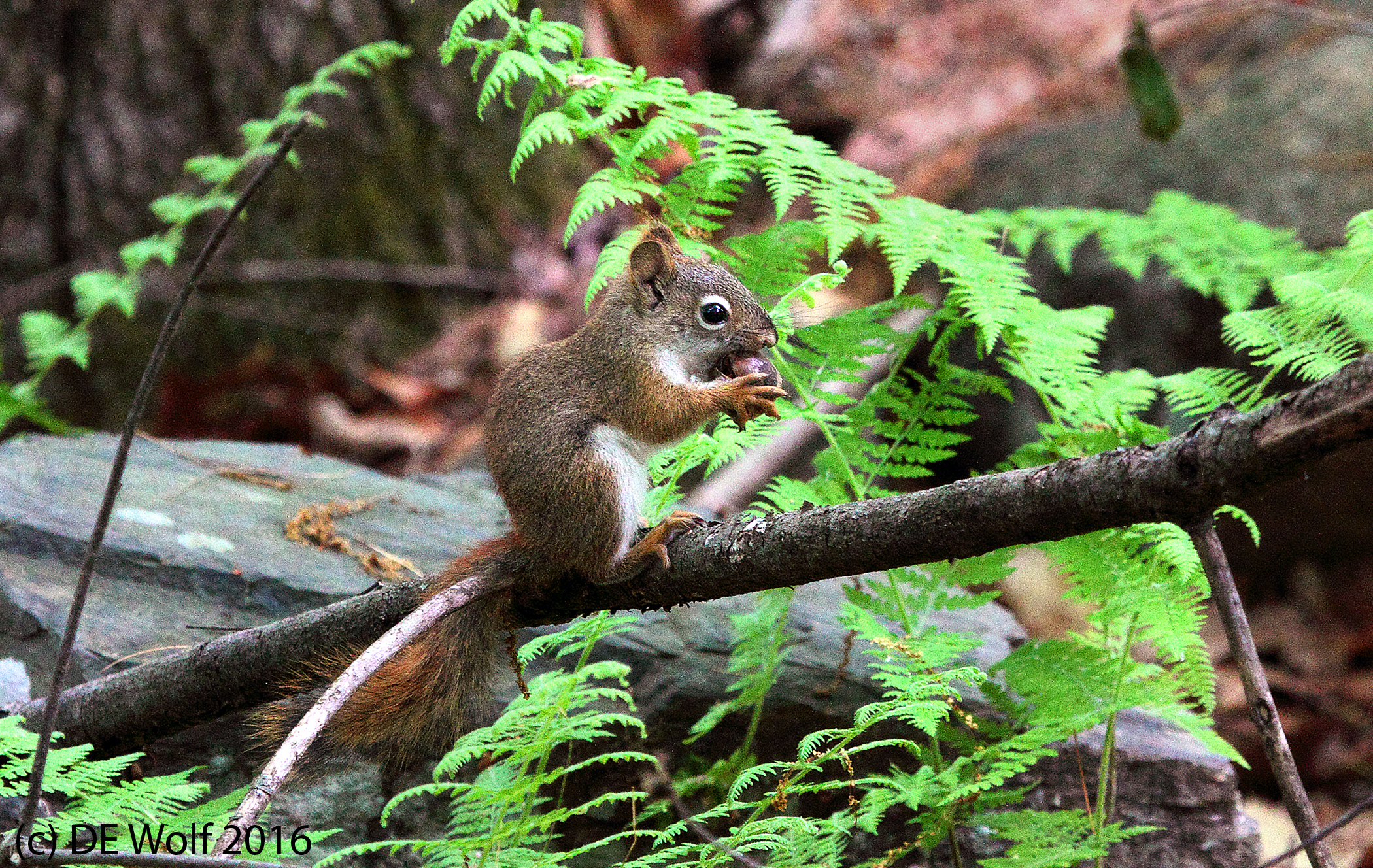
Figure 1 – American Red Squirrel at the Assabet River National Wildlife Refuge, Sudbury, MA. (c) DE Wolf 2016.
Suspicious that I may have been waxing philosophical about the Belle Époque and the Singularity too long, I thought that I should take a break and venture back into the woods. Whereever manking may be headed – arguably a mechanical word – its origins are in nature and the forest. Figure 1 is a photograph that I took the other morning at the Wildlife Refuge of an American Red Squirrel – Tamiasciurus hudsonicus. The other major squirrel species in Massachusetts is the American Grey Squirrel – Sciurus carolinensis, and apparently if you go out at night you will see, or hear, the Northern flying squirrels – Glaucomys sabrinus. I would love to go out at night with an IR camera and photograph the ghostly spirits in the trees.
As one who grew up in New York City, I have always liked squirrels as they are one of the few wild creatures that we see. A friend refers to them as “rats with fluffy tails and good PR.” And, of course, people who feed birds hate them. But actually at this time of year the floor and trees of the pine barrens are filled with chipmunks and squirrels – much to the delight of owls, hawks, and eagles, and of course young children.
Canon T2i with EF100-400mm f/4.5-5.6L IS USM lens at 250 mm, ISO 1600, Apreture Priority AE Mode at 1/125th sec at f/7.1 with -1 exposure compensation.
Common snapping turtle – Chelydra serpentina

Today’s image is actually a short slide show; so please be sure to watch the whole set. I had the privilege yesterday of encountering this common snapping turtle – Chelydra serpentina laying eggs in sandy soil besides the path at the wildlife refuge. I gingerly walked past her, watching her carefully as she watched me carefully, and stood a while taking photographs. It never occurred to me that my camera has the ability to take video.
Here is a clear example of when a DSLR is preferable to an IPhone. With the IPhone I might have lost fingers getting close enough – or she might have eaten the IPhone – you never know.
As the name implies this is the most common species of snapping turtle in North America. The other species being the alligator snapping turtle – Macrochelys temminckii. There’s a lot in a name. My wife tells me that this one needs a name. So I will call her “Chely Serpentine.” The term “serpentina” or snakelike, derives from this snapper’s ability to bend its head back and, well, snap you. Hint – mind your social distance. I have read that they are not particularly aggressive, except when threatened. Book knowledge can be a dangerous thing. I tried very hard not to threaten Chely as I took her picture.
I include one full color image to give you a sense of the scene, but took the rest in black and white because the prehistoric demeanor would seem to demand it. I love the intricacies of shell and armour and the dinosaur-like face with bugs clinging to it – the result of digging in the sandy soil.
Snapping turtles reach maturity at twelve to fifteen years of age, depending upon whether they are in a southern or more northern environment respectively. They typically lay twenty to forty golf-ball sized eggs, which hatch in the early fall. There is a very intriguing aspect to snapping turtle egg development. Snapping turtles have temperature-dependent sex determination. Eggs maintained at 68°F produce only females; eggs maintained at 70-72°F produce both male and female turtles; and those incubated at 73-75°F produce only males. Not surprisingly, there is a very high mortality rate among hatchlings. It is unclear how long these behemoths live, but capture, tag, recapture programs place this at about one hundred years.
Figure 1 – Canon T2i with EF100-400mm f/4.5-5.6L IS USM lens at 190 mm, ISO 1600, Aperture Priority AE Mode, 1/1000th sec at f/7.1 with no exposure compensation.
Figure 2 – Canon T2i with EF100-400mm f/4.5-5.6L IS USM lens at 310 mm, ISO 1600, Aperture Priority AE Mode, 1/1000th sec at f/7.1 with -1 exposure compensation.
Figure 3 – Canon T2i with EF100-400mm f/4.5-5.6L IS USM lens at 135 mm, ISO 1600, Aperture Priority AE Mode, 1/800th sec at f/7.1 with -1 exposure compensation.
Figure 4 – Canon T2i with EF100-400mm f/4.5-5.6L IS USM lens at 310 mm, ISO 1600, Aperture Priority AE Mode, 1/1000th sec at f/7.1 with -1 exposure compensation.
My next-door neighbor
I ran into the fellow in Figure 1, my next-door neighbor, in my back yard yesterday evening. He is an Eastern Cottontail (Sylvilagus floridanus), and it makes one wonder. The wild is really at our doorsteps. But more significantly, there has been a family of cottontails and a family of woodchucks living in my backyard as long as we have been here.
Whose backyard is it really? I read that back in the nineteenth century the site of my home was the location of a wheelwright’s shop and home – a Mr. Taylor, I believe. I suspect that the forebears of these fur-bearers were living here then. They would have been disturbed as human houses were torn down and new ones constructed. But they stayed on.
Every spring each year, my wife and I plant large pots which we locate at the end of the driveway. We carefully water them, and the next morning we find them all torn up with the little plantings strewn about the lawn. It only happens the one time each summer, as if it were a little protest meant to remind me of just who was here first.
So anyway, here is a portrait of my next-door neighbor. It seems sadly likely that at the time of King Philip’s War one of his distant ancestors was roasted for some Puritan’s dinner – we cannot say for sure.
Canon T2i with EF100-400mm f/4.5-5.6L IS USM lens at 330 mm, ISO 1600, Aperture Priority AE Mode, 1/250th sec at f/7.1 with no exposure compensation.
The pine barrens
My wife and I used to, and I suppose still do, rejoice in the view of a pine barren. Pine barrens occur throughout the northeastern United States. They are plant communities that evolve on dry, acidic, infertile soils dominated by grasses, forbs, low shrubs, and small to medium-sized pines. The Assabet River National Wildlife Refuge is a pine barren, and an obvious feature, as you explore the landscape, is its glacial origins in the last ice age. Indeed, the watershed of the Concord and Assabet Rivers have developed from two huge glacial lakes which flooded the land 18,000 years ago: glacial Lake Sudbury (which encompasses what is now the Wildlife Refuge) and glacial Lake Concord.
With the coming of the warm weather there is a definite sense of summer in the air. For the first time this season, I put on bug spray – which seemed to attract the bugs to me. Bugs, bugs, bugs! As you walk along the paths now the song of the insects cries out louder than that of the birds – and more amusing is the bizarre bass croaks of the frogs, which you mistake at first as stomach gurglings.
Nature seems ever timeless. The cycles are there but the key is their immutability. But the longer cycles are there as well – the glaciations and the transitions of the climax forests. The woods are not as they always have been nor as they ever will be. The Earth changes – now hastened by man-induced climate change – an biological evolution marches forward – with direction only defined after it has occurred.
I thought today that I would share some photographs of the pine barren. Figure 1 was taken with my big lens. This was not only overkill but also a sacrifice of sharpness. Figure 2, on the other-hand, was taken with my ever ready and trusty IPhone 6. For fun I include the camera settings for the IPhone as well, and I leave it to the reader to decide which is better and which is sharper.
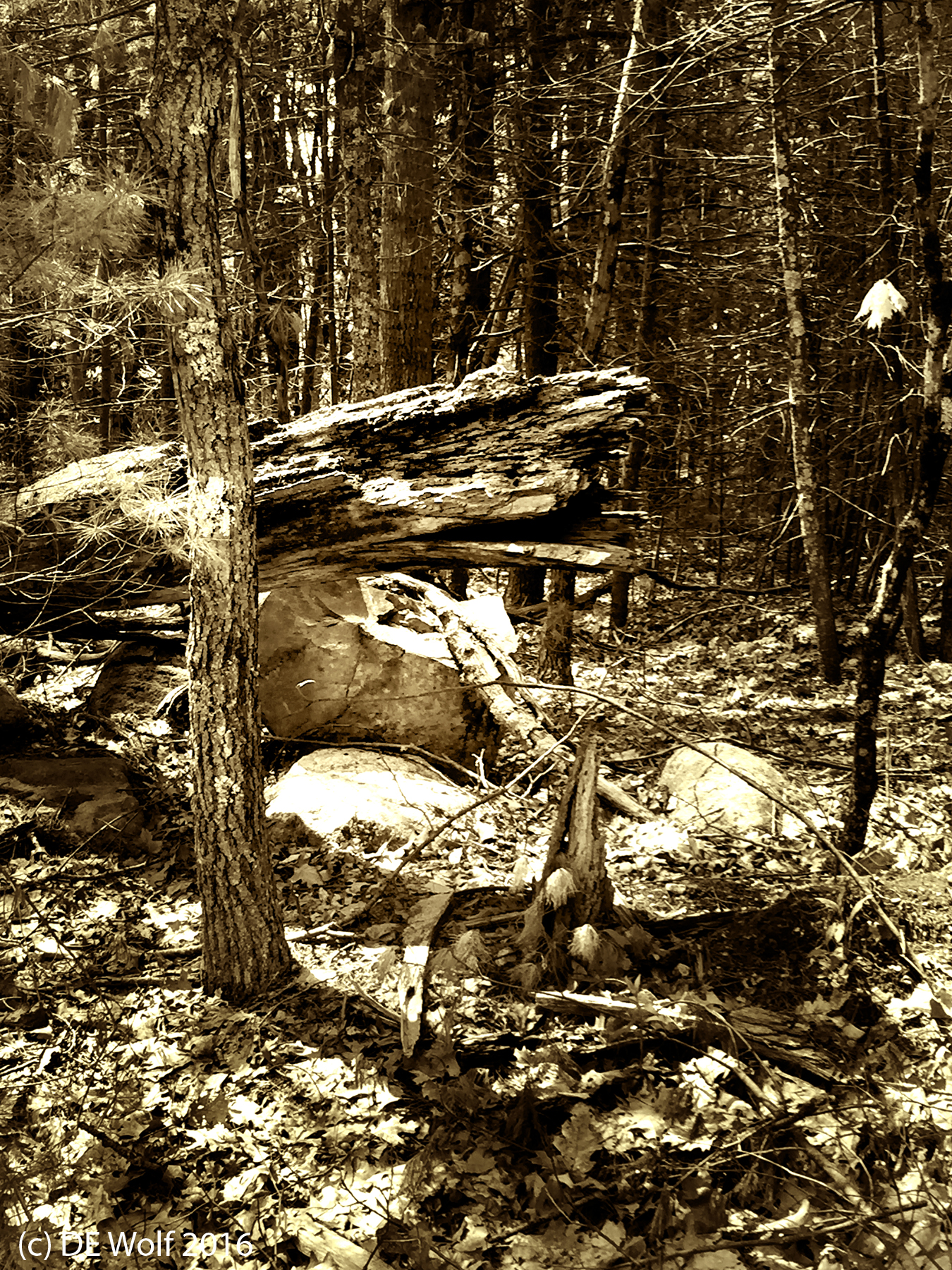
Figure 2 – The pine barren #2, Iphone photograph, Assabet River National Wildlife Refuge, (c) DE Wolf 2016.
Figure 1 Canon T2i with EF100-400mm f/4.5-5.6L IS USM lens at 100 mm, ISO 1600, Aperture Priority AE Mode, 1/320th sec at f/7.1 with -1 exposure compensation.
Figure 2 IPhone 6 4.2 mm Lens, ISO 32, 1/186 sec at f/2.2 with no exposure compensation.
Christmas is over
As I am writing this blog I look over my shoulder to my right and see the outdoor temperature on my patio, 86 deg. F. That crosses this New Englander’s comfort zone, which lies somewhere between 76 and 80 deg. F. For me this is hot!
Beyond personal disconfort, I have to say that it is certainly time, people, to take in your Christmas decorations. June is no time to have lit-up Santa’s on your roofs or holiday wreaths on your doors. It smacks perhaps of the slothful.
Now I have to say that I know of at least one reader and co-Masschusettsian who is rejoicing, probably by her pool. And that is the very point. When it gets this hot and humid our thoughts naturally gravitate towards the water. My thought are at the beach and by the ocean. It is a Herman Melville put it in his Moby Dick “There is nothing surprising in this. If they but knew it, almost all men in their degree, some time or other, cherish very nearly the same feelings towards the ocean with me.” To quel my yearning, I am going to post today this image that I took a while back of granites on a beach in Madison, CT.
I am always torn when photographing stone. Should I do it in color or in black and white? For these particular granites I was struck by the wonderful pink coloration. Granite is an intrusive igneous rock, which means that it cools slowly deep beneath the Earth. This slow cooling gives the mineral crystals time to grow – hence beautiful texture and mineralization.
Canon T2i with Lens EF70-200mm f/4L USM lens at 70 mm, ISO 1600, Aperture Priority AE MOde, 1/800th sec at f/13.0 with no exposure compensation
Updates from Hati and Skoll
It is high time for a little housekeeping at Hati and Skoll Gallery. So a few things. First, and most importantly a bug thanks to all of the loyal blog readers and site-visitors. I really appreciate all of your support and comments. Second, I have updated the “Birds Gallery;” so that it is closer to being complete. Third, and finally, as regular readers will recognize over the last several months I have been hiking and photographing at the wonderful Assabet River National Wildlife Refuge in Sudbury, Maynard, Stow, and Hudson, Massachusetts. So I thought that it would be fun to consolidate and put up a dedicated gallery of these images, even if just temporarily. Also I decided to do this as a photoessay rather than just a random gallery; so if you visit the “National Wildlife Refuge Gallery” you will see not only photographs but also notable quotes about wilderness and nature. I hope you enjoy it.
Thanks again for all of your support.
David

